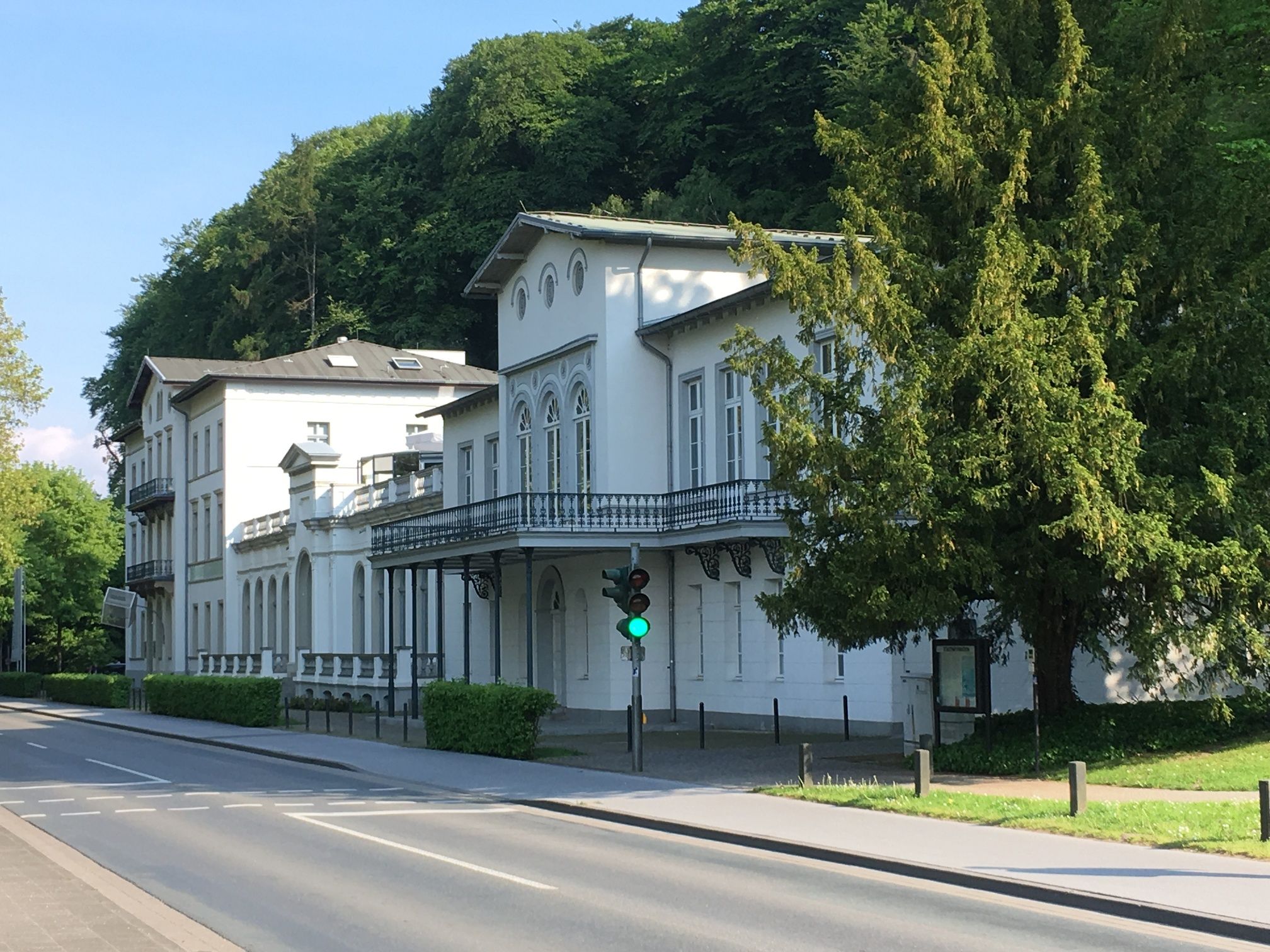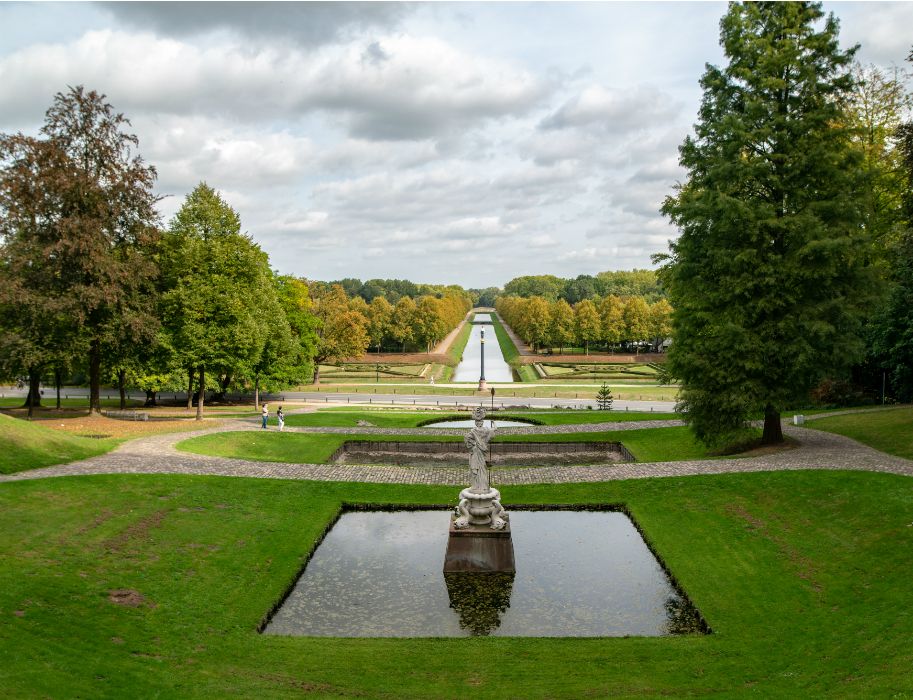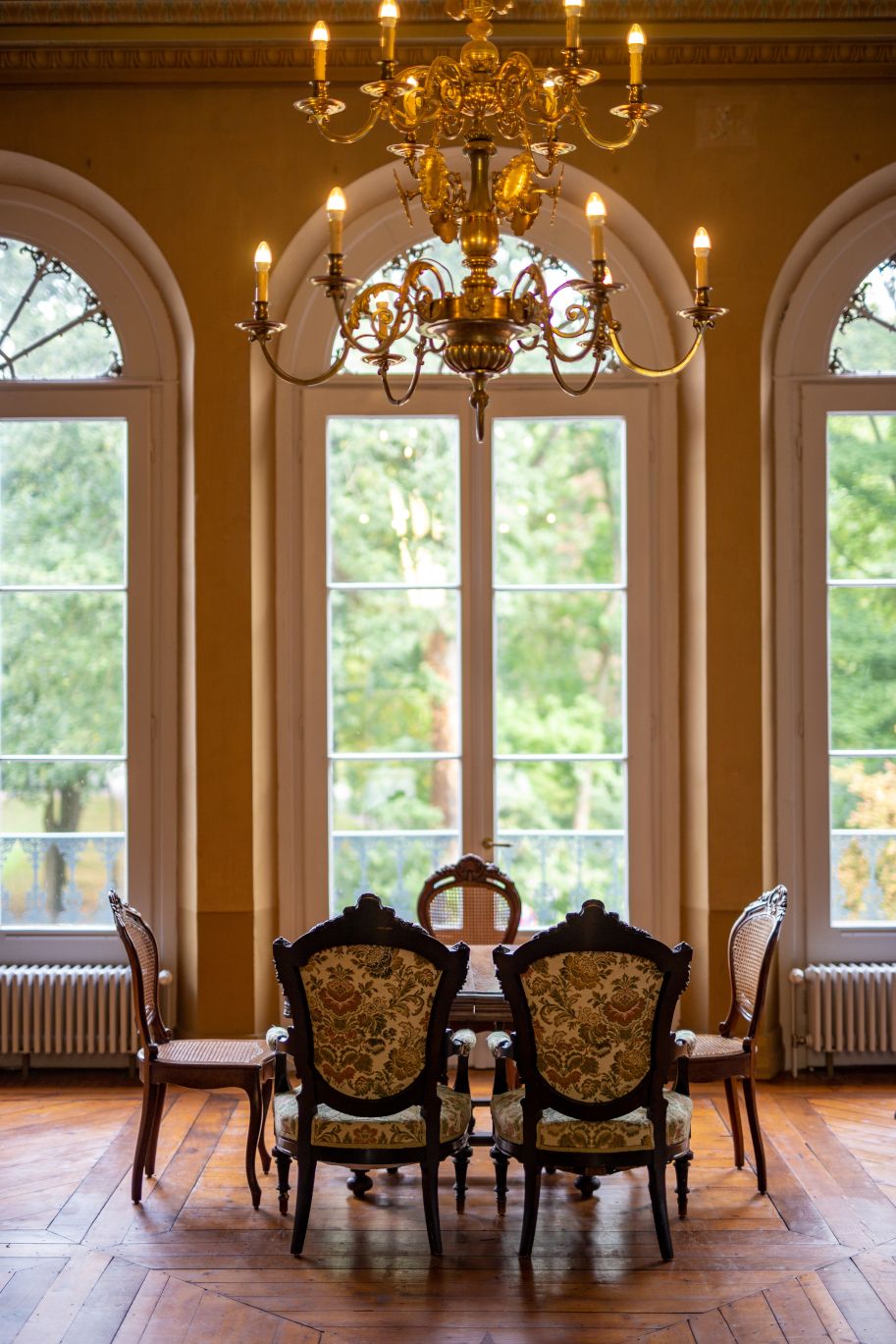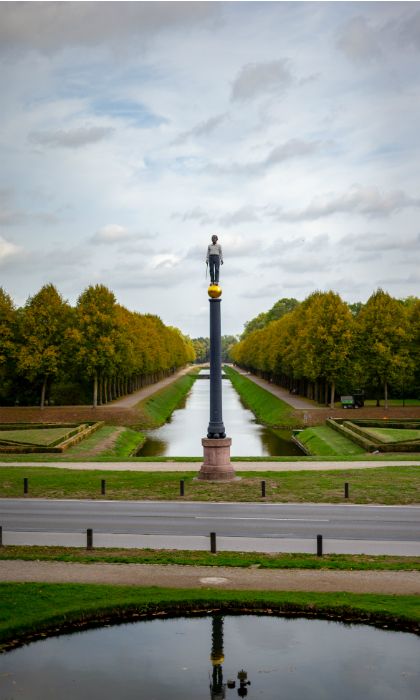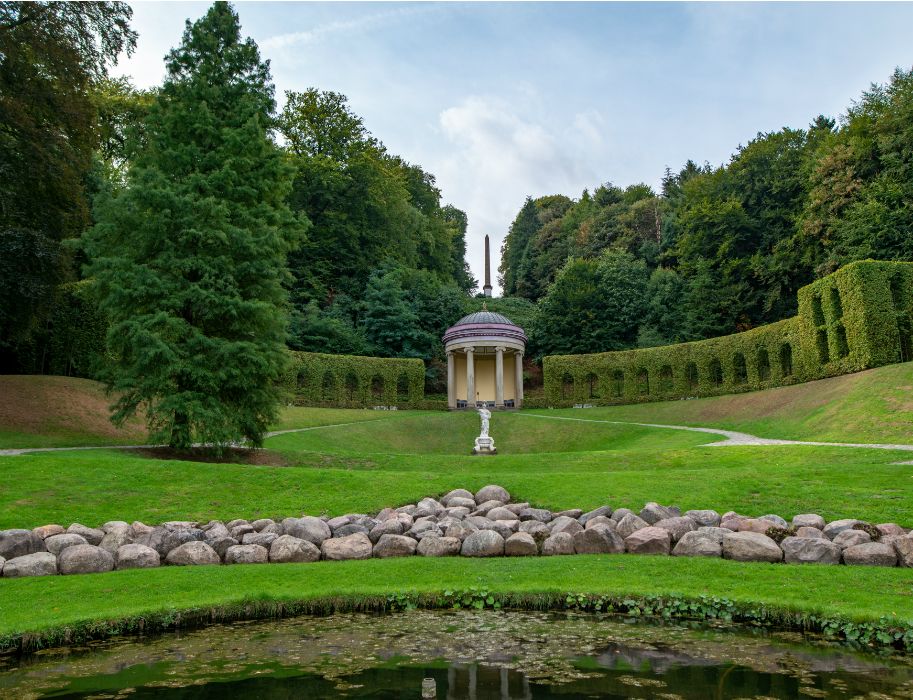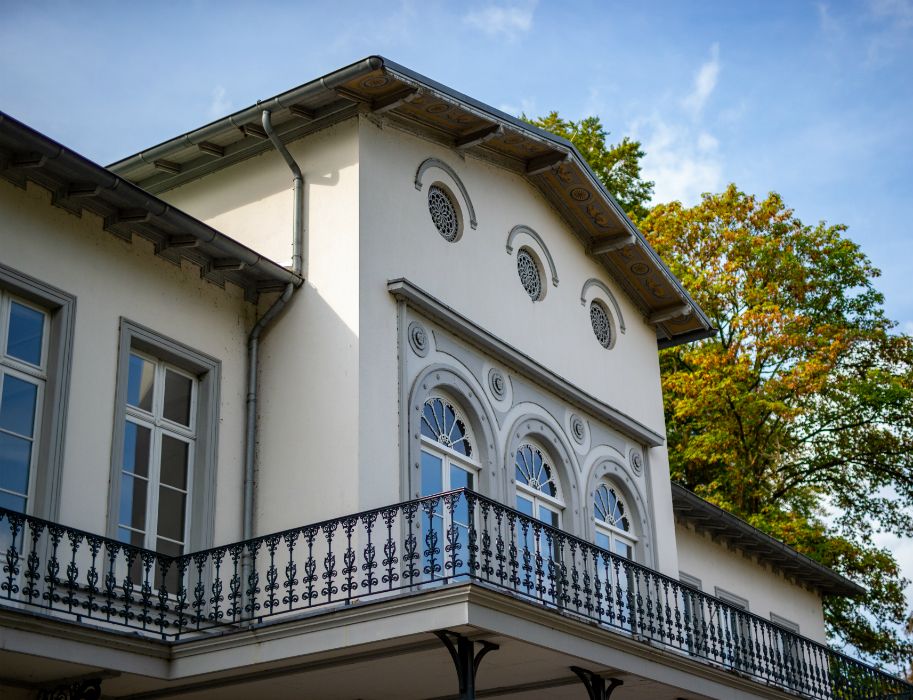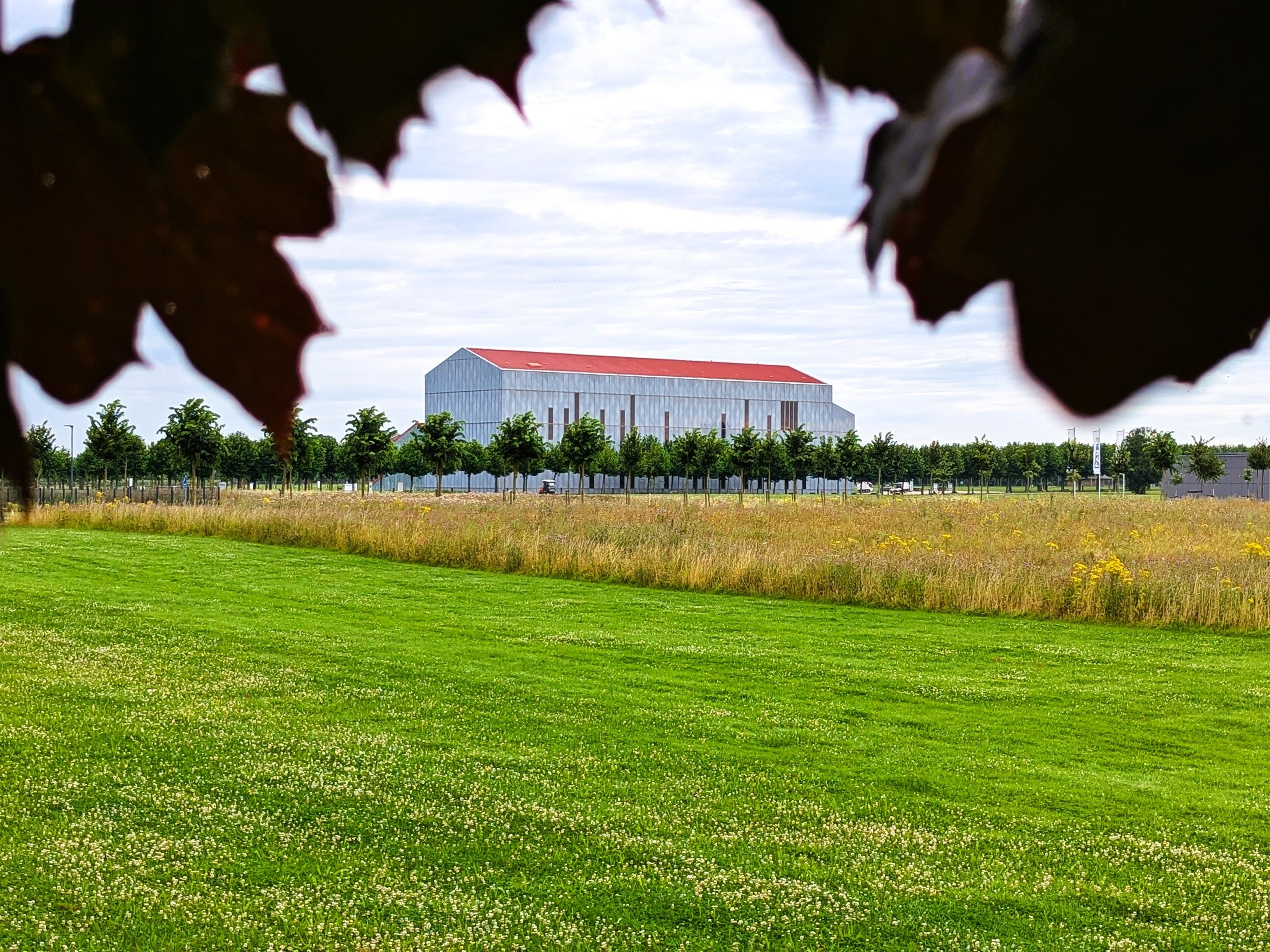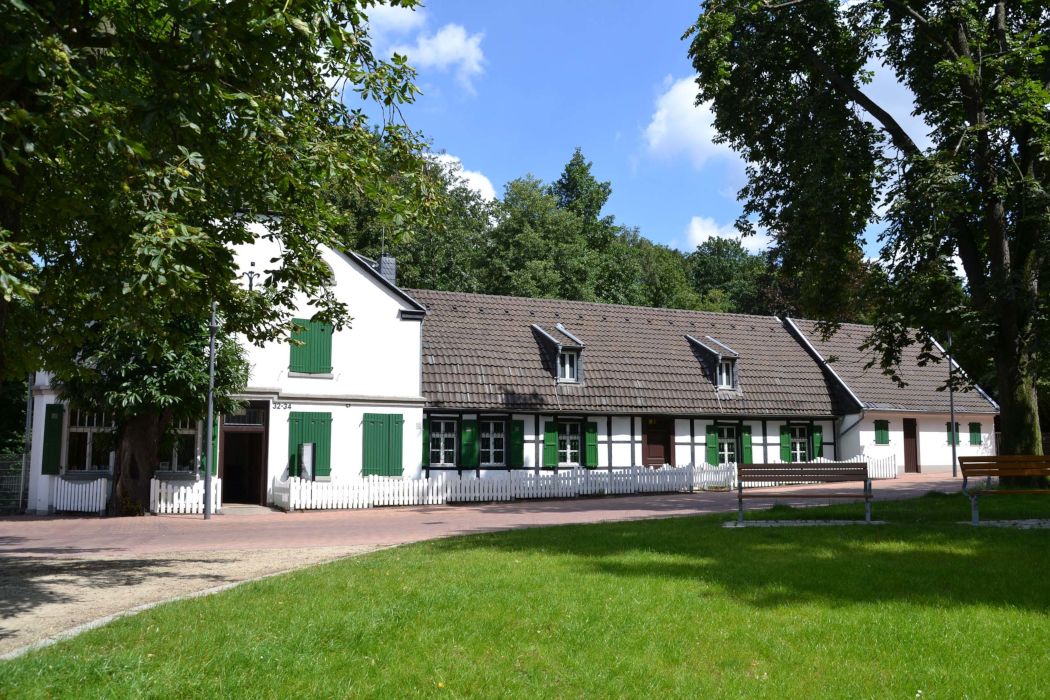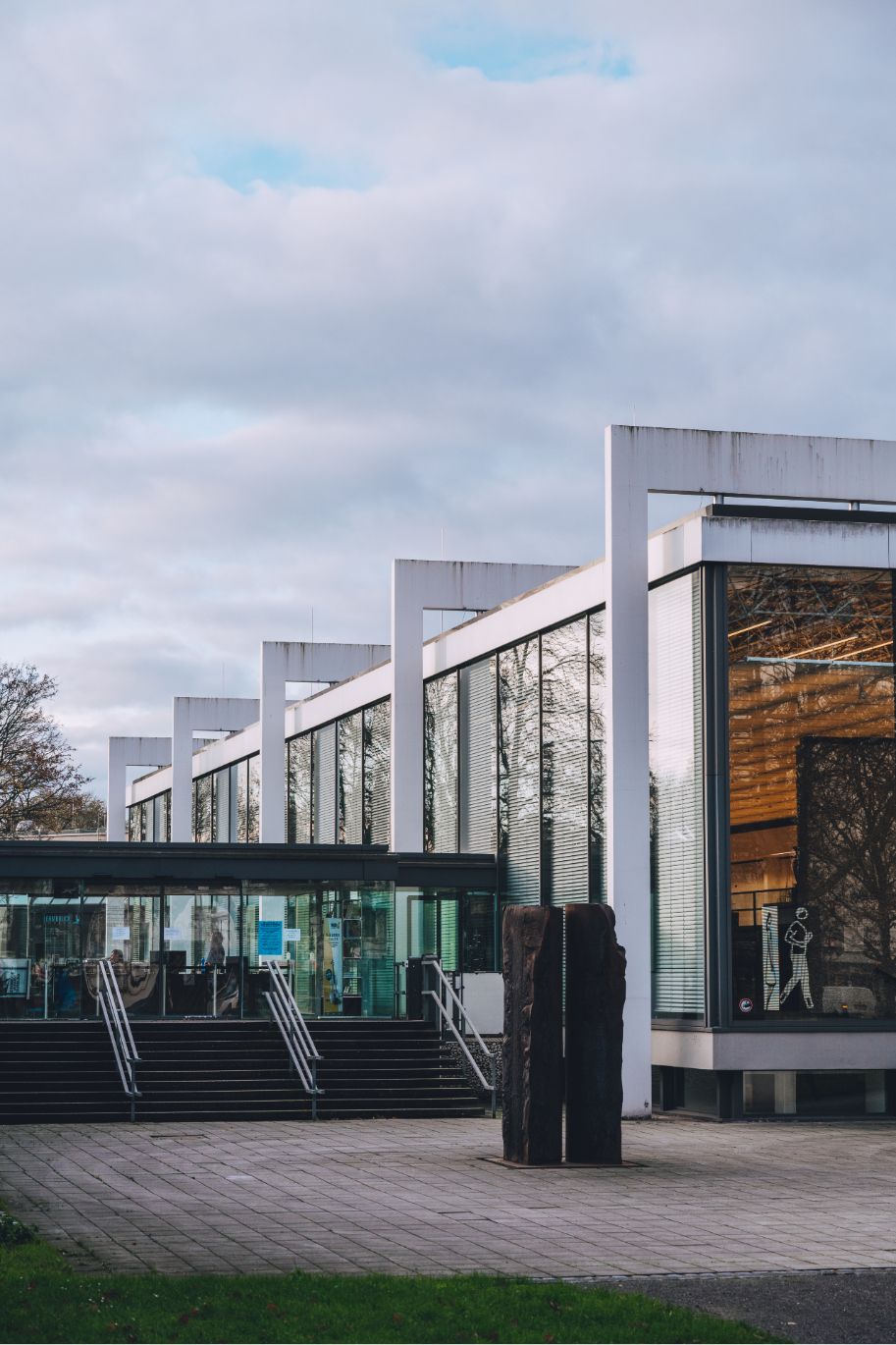It is as if you are looking at them: ladies in long dresses strolling in the park accompanied by elegant gentlemen in tall hats. They stroll past classicist villas to the magnificent Friedrich-Wilhelms-Bad. Although the spa guests have long since disappeared from "Bad Cleve", visitors interested in art still enjoy the special atmosphere of the baroque gardens around the Kurhaus Kleve. Since 1997, the three-part building complex from the 19th century has served the town as a museum for contemporary art.
The conversion of the Kurhaus, which was built in 1846 in honor of King Friedrich Wilhelm IV, the adjoining hotel and the Wandelhalle made it possible to preserve the classicist building fabric and create exceptional space for contemporary art through new architecture. Modern rooms such as the columned gallery allow visitors to look out into the forest through a long glass front and at the same time enjoy works such as Richard Long's "Midsummer Flint Line" (2001) or Giuseppe Penone's "Alberi Orrizontali" (1970-91) in all their dimensions.
Former studio of Joseph Beuys
Visitors pass through the gallery into the Katharina von Kleve Hall and the former bathhouse. In addition to contemporary art, the museum presents its heavyweight collection of medieval sculpture and manuscript leaves. The Three Wise Men by Henrik Douverman and the Hours of Katharina von Kleve are a highlight, while works by such well-known artists as Gerhard Richter, Yves Klein, Cy Twombly and Richard Serra are also on display in the former course rooms.Not to mention that Joseph Beuys' former studio is also located here and the largest collection of works by his teacher Ewald Mataré can be discovered in the Kurhotel opposite. Speaking of Mataré: The collection was further expanded in July 2022 with a donation of over 900 works by the founding director of the Museum Kurhaus, Guido de Wert. In future, the institution will present works from all genres and creative periods of the artist in thematically appropriate temporary exhibitions.
Finally, the enjoyment of art is followed by a walk through the historic park landscape. In the oldest part of the Kleve Gardens, which Johann Moritz von Nassau-Siegen had laid out in the mid-17th century, visitors come across the statue of Artus Quellinus the Elder. (1660), Pallas Athena, which still stands in its original place. The so-called Frost Garden was later created especially for spa guests with a variety of rare and exotic trees. Visitors can take a stroll here - just as the elegant ladies and gentlemen once did during their stay at the spa.

